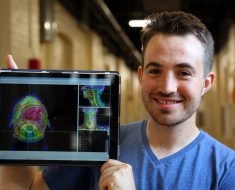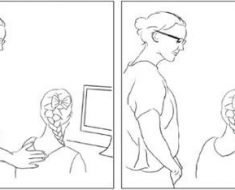Basal cell carcinoma is one of the most common types of skin cancer, affecting over 1 million Americans each year and accounting for 75% of all skin cancers. This type of cancer has a 95% cure rate, but may become life threatening if left untreated.
Symptoms and characteristics of basal cell carcinoma
Basal cell carcinoma is most commonly seen in the most exposed parts of the body such as the face, ears, neck, scalp, shoulders and back.
Initially, basal carcinoma may have a similar appearance to psoriasis or eczema. It may also present as a bleeding or non-healing sore, a shiny bump, pink growth over a scar or a reddish patch. Those with exposure to known risk factors for basal cell carcinoma are carefully monitored for changes in the skin. The appearance of the lesion and any change in size, color, texture, and appearance along with pain, itching or bleeding are noted.
Risk factors and causes of basal cell carcinoma
Basal cell carcinomas are slow growing cancers. One of the main causative factors is over exposure to sunlight and individuals who spend a lot of time in the sun such as those who work outdoors or like to sunbathe are at particular risk of basal cell carcinoma.
The risk is generally higher among those with fair skin, blue, green, or grey eyes and blonde or red hair. These individuals also have a 50% risk of getting another tumour within the five years after basal cell carcinoma is diagnosed.
Other factors that may increase the risk of this cancer include exposure of the skin to radiation, scarring, tattoos or burns.
Diagnosis and treatment
The lesion is first examined and a tissue sample or biopsy taken for analysis. The sample is then sliced into thin slices, fixed on a glass side, stained with special dyes and examined under the microscope by a pathologist.
Depending upon the size, location and extent of cancer spread, treatment is determined. Treatment may range from the use of topical or locally applied medications to removal by curettage or surgery.
Locally applied medications commonly include imiquimod or fluorouracil. Some small lesions may be removed using a procedure called curettage and electrodessication. Electrically charged needles are used to kill and burn off the cells of the cancer.
Cryosurgery, on the other hand, describes the use of extremely cold temperatures to kill off the cancer cells. The tumor then forms a crust and eventually falls off. Laser beams may also be used to achieve the same outcome and is called photodynamic therapy. This is often used to treat the face and scalp when more than one lesion is present.
Surgical excision of the lesion may also be performed, which involves the removal of the tumor along with a margin of normal skin as a safety margin, to ensure all of the tumour is captured. Radiation therapy is another alternative, which directs high-energy, pinpointed X-rays at cancer cells in order to destroy them.
Sources
- http://www.med.muni.cz/biomedjournal/pdf/2006/05/261_270.pdf
- www.ashfordstpeters.nhs.uk/…/…%20of%20Basal%20Cell%20Carcinoma.pdf
- www.cap.org/apps/docs/reference/myBiopsy/SkinBasalCellCarcinoma.pdf
- www.fbae.org/…/Basal%20Cell%20Carcinoma.pdf
- http://www.skinpathology.net/pdf/basal-cell-carcinoma.pdf
- www.ncbi.nlm.nih.gov/…/westjmed00080-0077a.pdf
- http://www.pjo.com.pk/27/1/Ibrar%20Hussain.pdf
Further Reading
- All Basal Cell Carcinoma Content
- Basal Cell Carcinoma Diagnosis
- Basal Cell Carcinoma Pathophysiology
- Basal Cell Carcinoma Treatments
- Basal Cell Carcinoma Prognosis
Last Updated: Feb 26, 2019

Written by
Dr. Ananya Mandal
Dr. Ananya Mandal is a doctor by profession, lecturer by vocation and a medical writer by passion. She specialized in Clinical Pharmacology after her bachelor's (MBBS). For her, health communication is not just writing complicated reviews for professionals but making medical knowledge understandable and available to the general public as well.
Source: Read Full Article





